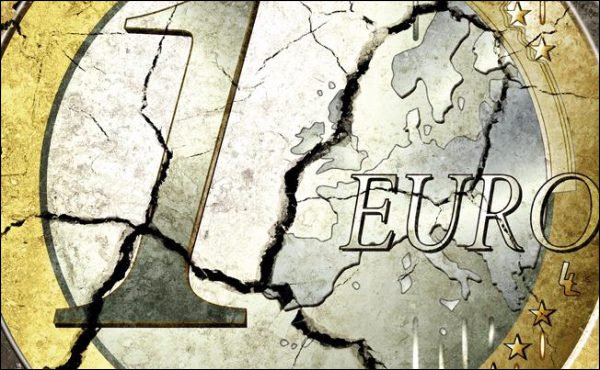
Money flows out of eurozone, going to dollar and smaller countries
An avalanche of cash is flowing away from the eurozone, where returns on safe assets are hardly positive, and direct to the United States, strengthening the dollar, and smaller states like Denmark and Switzerland.
In less than a year, Europe’s currency has dropped 22% against the dollar, from $1.39 to $1.08. In March the common currency touched a 12-year low of less than $1.05.
According to many analysts, the big drop has been deepened by the willingness of big investors to take their assets out of euros and not by speculators betting that the euro will fall. While the European Central Bank is holding interest rates, the U.S. Federal Reserve is looking to raise them - a combination that pushes the euro down against the dollar. The different paths of European and U.S. monetary policy have been a catalyst for European savers and investors to reallocate their portfolios away from Europe and into the U.S. in search of returns.
Big central banks seem to be following the trend, as China and the oil-rich Middle Eastern countries had placed some of their foreign reserves into euros changing course.
As the ECB brought in negative deposit rates in June, more cash has flowed out of the eurozone to buy foreign stocks and bonds than has flowed in, according to ECB data. In the final quarter of 2014, the gap was €124.4 billion.
The euro has fallen, but European stocks and bonds have rallied. That is largely thanks to quantitative easing, launched this year, in which it prints euros to buy bonds. It should push investors to buy riskier assets such as stocks, while the ECB’s own heavy buying of bonds keeps that market supported even as some investors move outside the eurozone, says The Wall Street Journal.
What has made the cash outflow from the euro especially powerful is states trimming their budget, as QE is taking place. That means they issue fewer bonds, and European investors have more reason to look abroad for returns instead of paying dearly for relatively scarce assets at home or having cash in euros that they might need to pay to hold on to.

The United States has been hurt, as huge demand from European investors has helped push the dollar higher this year. The rush into the dollar has also fueled a rally in U.S. Treasury's despite expectations that the Fed will raise interest rates this year. Foreign investors increased their holdings of Treasury bonds by $374.3 billion in 2014, Federal Reserve data show.
But the most vivid consequences were seen in the eurozone's refugees - Denmark and Switzerland.
The Danish central bank has cut interest rates four times in 2015 to discourage foreigners from piling into the krone. To keep its pegged-to-euro currency from climbing, the bank printed huge volumes of kroner to sell for euros.
Switzerland was so swamped by inflows that the central bank abruptly lifted its cap on the Swiss franc in January, leading to a dramatic one-day surge of more than 40% in the franc’s value.
According to Stephan Hirschbrich, a fixed-income portfolio manager at Germany’s Union Asset Management Holding AG, European investors face a choice: shift into longer-dated or riskier debt, or look overseas. “For our clients that are able to, we’ve been moving into the U.S. where we can benefit from a rising dollar and higher yields,” he said.
A number of experts think that cash outflows from the euro area will continue. Deutsche Bank forecasts a fall as far as 85 cents for the euro by the end of 2017 as a large and persistent excess of savings particularly in northern European economies like Germany and the Netherlandslooks for a home overseas.
Central banks
The common currency's drop is also connected with a shift in the behavior of the investors with the biggest pockets of all - central banks.
Before
the financial crisis, central banks led by the People’s Bank of China
bought up huge piles of dollars to keep their own currencies from
climbing. Howeverm they started to diversify after the launch of the euro in 1999After the euro’s launch in 1999, as the new currency looked set to become a serious
rival to the buck as a global reserve.
Neil Mellor, a currency strategist at Bank of New York Mellon, comments the current situation like this: “Some very big reserve managers are no longer scooping up huge amounts
of dollars, which means that they are no longer diversifying into the
euro.”
China has dropped foreign reserve accumulation as a direct policy measure, Russia has largely let its currency float freely since the start of 2015 and oil-producing nations in general have seen dollar revenues plummet, said Mr. Mellor.
This means less currency will be recycled into the euro.


